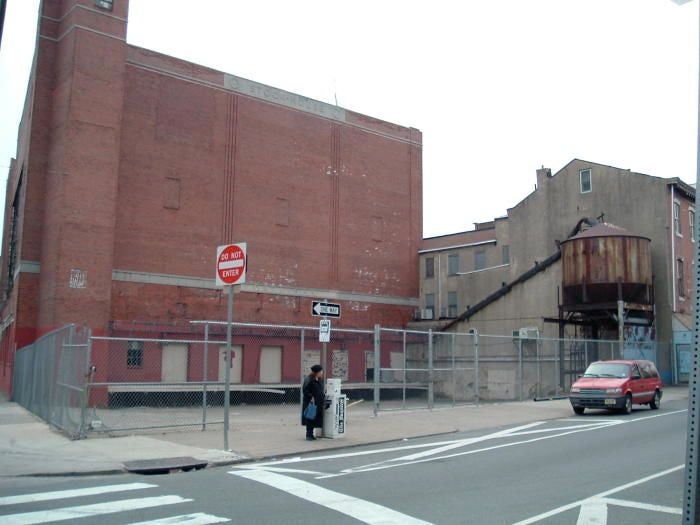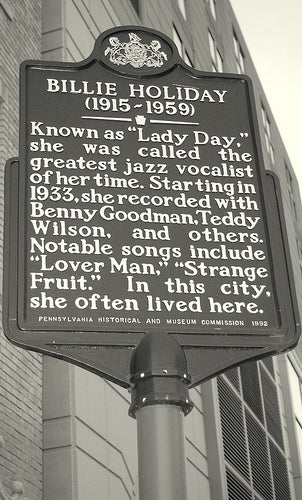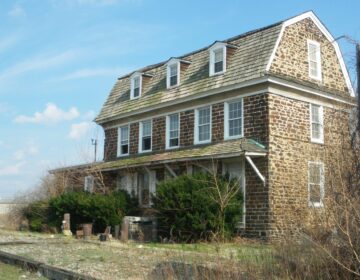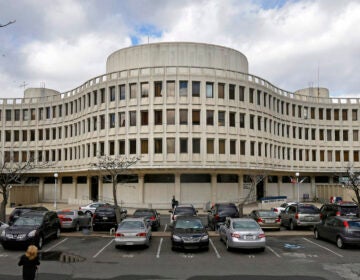Bringing Philadelphia’s places to life
February 23, 2010
By JoAnn Greco
For PlanPhilly
Agnes Hatcher has some, er, pungent memories of growing up in 1930s Northern Liberties. Ortlieb’s Brewery was right down the block from her home on N. American Street, for one thing. “The foam [from the brewing process] would come up through the chimney and we’d get up there and we’d catch [it] like soap bubbles,” she recalls. “By the time we were finished, we were stinking of beer. . . . ”
Not to be discounted: the leather tanning factory and the pickling outfit, each adding substantially to the aromatic clamor. Between them all, she continues, “you didn’t know sometimes what you were smelling! All of that in the summertime gets mixed together: you don’t know if you’re coming or going.”
There was so much history in that area, she muses. “No one even thought to report or keep up with it. No one.”
That is, until now.
Hatcher’s memories have been incorporated into PhilaPlace, a collaborative initiative created by the Historical Society of Pennsylvania (HSP), in partnership with the City of Philadelphia Department of Records, the University of Pennsylvania School of Design, and other institutions and community organizations. Ordinary people like this 80-something, African-American woman play a critical role.
“We’re interested in creating a co-constructed narrative to document the histories of key Philadelphia neighborhoods,” says Joan Saverino, a folklorist and director of PhilaPlace. The 150 stories currently available on PhilaPlace are enriched with more than a thousand historical and contemporary photos, contributed by community organizations, the Department of Records, HSP and individuals.
The project’s roots lie in two, four-hour trolley tours conducted by HSP in Spring 2006 — one to Old Southwark (encompassing Queen Village, the Italian Market, and Fabric Row) and one to Greater Northern Liberties/Lower North Philadelphia. Participants visited the Ninth Street Market and Kensington’s Al-Aqsa mosque, stopping to chat with merchants, artists, community leaders and others affiliated with the sites.
“One of the threads that came out of the trolley tours was the concept of adaptive re-use,” says Saverino. “At the mosque, we talked about how the building used to be a Jewish-owned furniture factory. At Phillips Temple Christian Methodist Church in Queen Village, currently an African-American church, we could literally see its original purpose as a synagogue by viewing what used to be the women’s balcony.”
The two neighborhoods while rich with history, remain off the tourism radar screen. “The story of the river communities, both north and south of Center City, is one of working-class immigrant neighborhoods,” Saverino says. “As real estate values rise and demographics shift, erasure is beginning to occur. The landscape is changing so rapidly. We wanted to tell that story in a grassroots way, before it disappears.”
Spinning off from the tours, the project has grown to include local and teacher workshops, exhibits, and printed neighborhood guides. Under consideration for the future: mobile apps and perhaps augmented reality games. For now, though, the most intriguing aspect is a web component, www.PhilaPlace.org, created by Philadelphia-based Night Kitchen Interactive and launched in Dec. 2009.
The site’s home page opens with an image of an interactive roll-over map that features the parcels, buildings, parks, and streets of much of South and lower North Phillly. Pushpin icons highlight points of interest. Click on one at 10th and Christian, for example, and up pops a photo of St. Paul’s Roman Catholic Church, with the beginnings of a blurb. Click on that, and the rest of the blurb is revealed, along with a media library of, in this case, seven still photos.
The site is searchable by such media (vintage photos, illustrations, videos, documents and audio clips), as well as neighborhoods (such as Bella Vista, Kensington, South Street), topics (like education and schools, religious life and beliefs, landscape and architecture), and contributors (HSP, partners, and individual visitors). Visitors can also save their favorite stories via a feature called “My PhilaPlace” and they can “Add a Story” to the PhilaPlace collection, contributing to the collective memory of each neighborhood.
Most of the already-uploaded stories appear in written form, either as reminiscences submitted by individuals or as essays authored by historians. A few dozen, like Agnes Hatcher’s, have been captured on video; while a handful, such as playwright Clay Goss’ memorable encounter, are relayed in audio form.
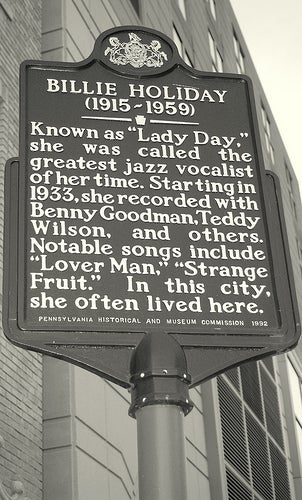
One day as a 1950s child on his way to church at Broad and Lombard, Goss relays, he noticed some sort of a commotion “between the police and a middle-aged woman who was still in her nightgown. . . . You had the impression that this was a little ritual, a little dance that they had gone through a couple of times.” Finally, after a lot of resistance, the cops succeeded in pushing the woman into the back of their police van. “I heard my Great Aunt Margaret say, very slowly, ‘That’s Billie,” Goss says. Later that day, he recalls, he told his mother about what he had seen. “She said, ‘Yeah, that was Billie Holiday . . . and she’s a great jazz singer’.”
This April, PhilaPlace.org will unveil its 2.0 version, offering in-depth looks at specific blocks, such as Ninth Street between Christian St. and Washington Ave. Users will be able to flip between contemporary Google maps and historical map layers, and census data from various time periods will be tied into the visual information. This kind of analysis is already available on the site’s Educator’s pages, where data on the occupations, ethnicity, population, and land use of Fabric Row is presented.
Eventually, the site hopes to dig deeper into other neighborhoods, too. For now, although any individual or organization can contribute archival material or stories about any neighborhood, the material isn’t posted. That’s so the maps can remain tightly focused, and the site’s collection doesn’t become disjointed, says Saverino.
“We don’t want there to be just one story on Germantown, one photo from Mantua, one document from Mt. Airy,” she explains. “We’ll wait until we have a great depth of content in another neighborhood before expanding.” Which neighborhood that is depends on the body of material available from partner organizations, and to those ever-present concerns: time and money.
It’s all, Saverino sums up, part of the “challenge of moving the grassroots into the digital.”
Contact JoAnn Greco, ASJA, SATW, at www.joanngreco.com
Check out her new online magazine, TheCityTraveler at www.thecitytraveler.com
WHYY is your source for fact-based, in-depth journalism and information. As a nonprofit organization, we rely on financial support from readers like you. Please give today.



